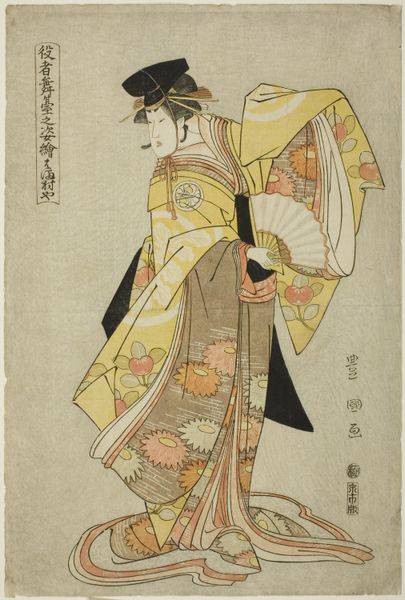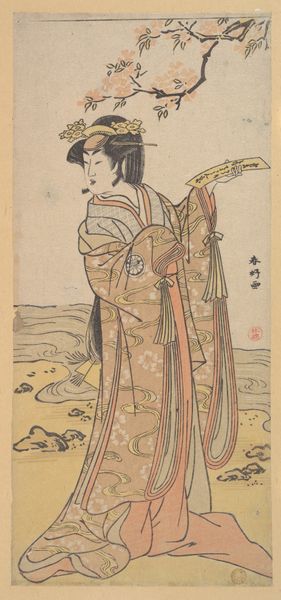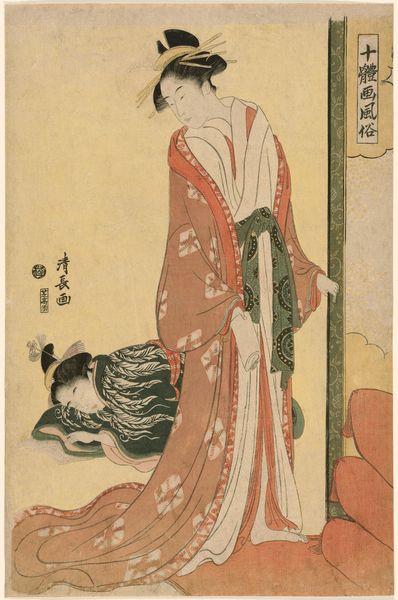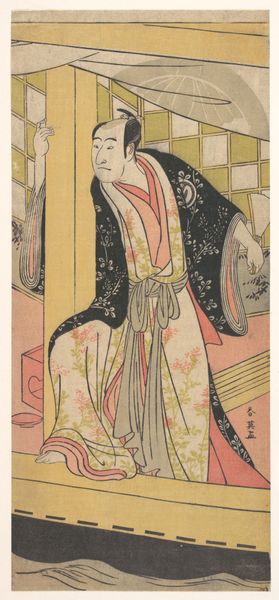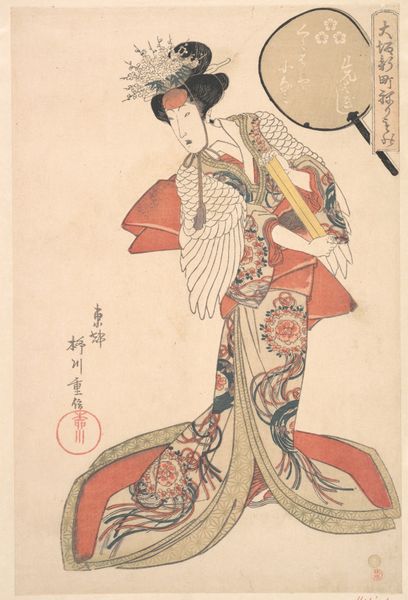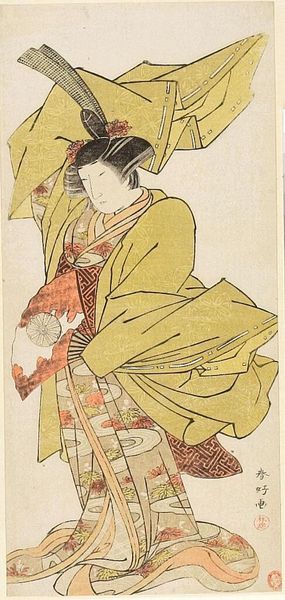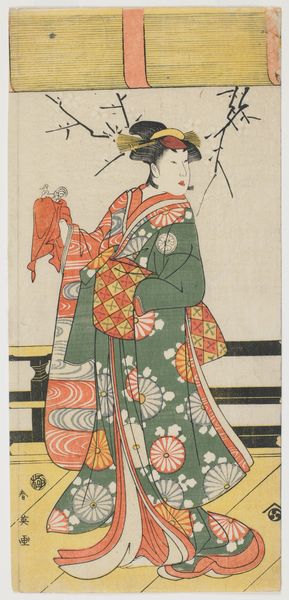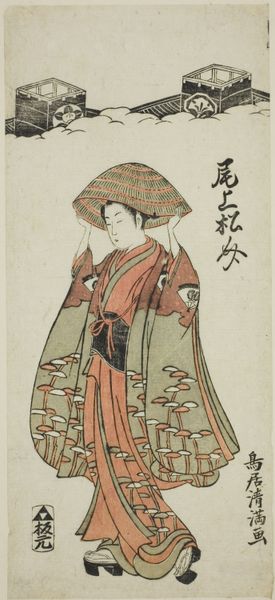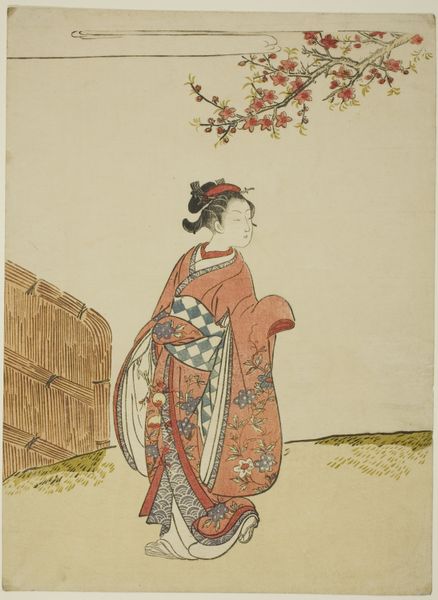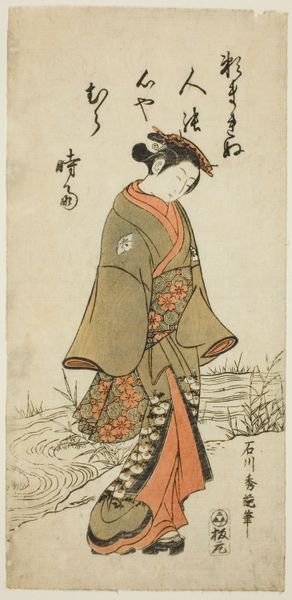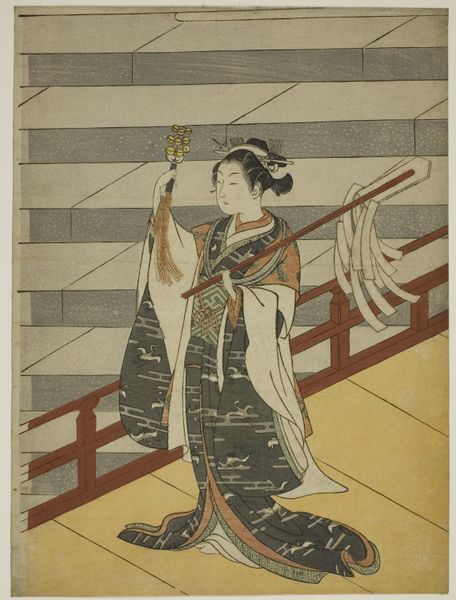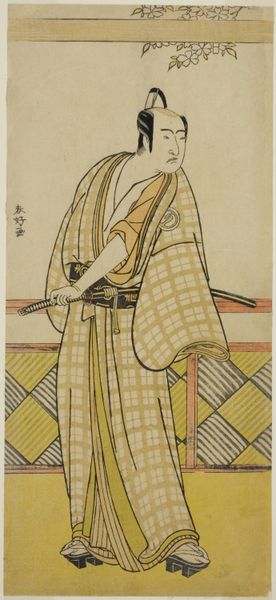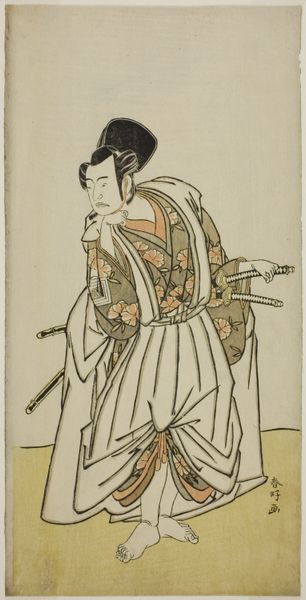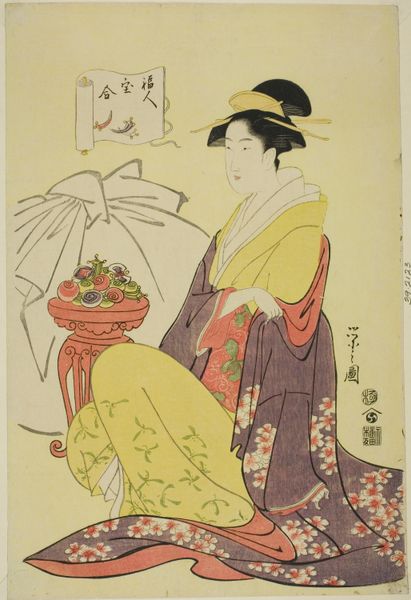
Mimasu Tokujuro as a Woman Standing Near a Winding Stream 1770 - 1790
0:00
0:00
print, woodblock-print
#
portrait
# print
#
asian-art
#
ukiyo-e
#
figuration
#
woodblock-print
Dimensions: 11 3/5 x 5 3/8 in. (29.5 x 13.7 cm)
Copyright: Public Domain
Editor: So, here we have "Mimasu Tokujuro as a Woman Standing Near a Winding Stream," a woodblock print by Katsukawa Shunko, created sometime between 1770 and 1790. What strikes me most is the serene elegance – it feels very composed, yet a little melancholy. What do you make of this Ukiyo-e print? Curator: This image offers a fascinating glimpse into the cultural context of Edo-period Japan and the public persona of Kabuki actors. Seeing Mimasu Tokujuro, a male actor, presented as a woman immediately points to the highly stylized and performative nature of gender within the Kabuki theater. Consider the role that the theater district, and these celebrity actors played in popular culture at the time. Why do you think that images like this would have been popular? Editor: I suppose it democratized the experience of seeing the actors perform live. Also, gender roles in the theater scene at that time seemed particularly… interesting. Curator: Precisely. Ukiyo-e prints like these allowed a broader audience to engage with the idealized images of beauty and fashion associated with the Kabuki stage. Also, let's consider the production of imagery, what kinds of restrictions might have impacted their production and sale? The woodblock medium meant mass production was relatively easy, right? But also opened possibilities for the censure. Editor: That’s true; the government at that time placed certain restriction, to protect elites or uphold the political order. But these were still reproduced and widely circulated regardless. Thanks, this makes the image a bit more engaging! Curator: Absolutely. It reveals the ways in which popular culture can challenge, reinforce, and sometimes cleverly evade prevailing social norms through spectacle and artistic representation. The image of gender performance also brings it back to how museums now represent such materials in an appropriate fashion. Editor: That's a great point. Thinking about this piece now, I realize the role it played both in its own time and how it continues to challenge contemporary ideas surrounding gender identity and artistic freedom.
Comments
No comments
Be the first to comment and join the conversation on the ultimate creative platform.
